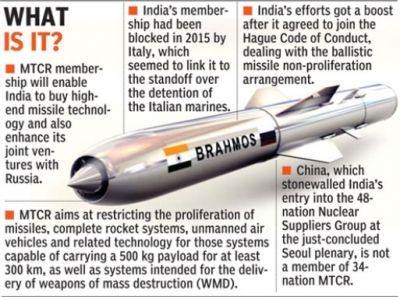Description
Context:
- A decade after the historic Indo-US nuclear deal, the pact did not lead to India setting up foreign-built reactors, but it helped fuel domestic power plants and give India access to critical technologies in strategic areas.
- It gave India the recognition of being a responsible nuclear weapon state with strong non-proliferation credentials.
Status of projects:
- Other than the imported Russian-built reactor-based project in Tamil Nadu, which is grandfathered under an earlier 1998 agreement, progress of greenfield projects since the Indo-US nuclear deal has been tardy.
- While the US has been discussing the sale of nuclear reactors to India since the 2008 pact, two subsequent agreements were signed only in 2016 and 2019.
- A “project proposal” to set up six reactors in collaboration with Westinghouse Electric Company (WEC) has been announced, but work is yet to begin.
- In terms of building foreign reactors, despite the waiver from the Nuclear Suppliers Group, there was "absolutely no construction" at any sites identified for imported reactors.
- The GE Hitachi Nuclear Energy is reluctant to take up the project citing the Civil Liability Nuclear Damage (CLND) Act, 2010.
U.S.–India Civil Nuclear Agreement or Indo-US nuclear deal
- The 123 Agreement signed between the United States of America and the Republic of India is known as the U.S.–India Civil Nuclear Agreement or Indo-US nuclear deal.
- It was signed on October 10, 2008.
- It gave a fillip to the ties between the two nations, which since then have been on an upswing.
Why this agreement was signed?
- India conducted a nuclear test in 1974, following which sanctions hit the country's defence, nuclear and space programmes hard.
- India developed Pressurised Heavy Water Reactors (PHWRs), which are currently the backbone of the Indian nuclear power generation.
- In 1998, after conducting nuclear tests, India declared itself a nuclear weapon state.
- As the number of nuclear reactors rose, their performance had reduced 50-55 per cent due to shortage of nuclear fuel, as sanctions were there.
- At that time, the concept of global warming was also gaining ground, India required energy for its growing economy.
Terms and features of 123 Agreement
- A major aspect of the Indo-US nuclear deal was the Nuclear Suppliers Group (NSG) gave a special waiver to India that enabled it to sign cooperation agreements with a dozen countries.
- The pact also enabled India to separate its civilian and military programmes.
- The country currently has 15 of its reactors under the International Atomic Energy Agency (IAEA).
- Post waiver, India signed nuclear cooperation agreements for peaceful means with the US, France, Russia, Canada, Argentina, Australia, Sri Lanka, United Kingdom, Japan, Vietnam, Bangladesh, Kazakhstan and Korea.
- Following the pacts, there have been specific agreements for import of uranium from France, Kazakhstan, Australia, Canada and Russia.
- Long-term uranium arrangements enabled India to run the existing plants at 80 per cent efficiency.
- India imported over 7841.51 metric tonnes of nuclear fuel from 2008-2009 to 2017-18.
- Work is also on to create a uranium reserve by importing the element to ensure the power reactors under IAEA safeguards do not face fuel shortage.
- Building of foreign nuclear reactors was a major aspect of the Indo-US deal. For this, two sites were earmarked---Mithi Virdi for General Electric Hitachi Nuclear Energy and Kovadda in Andhra Pradesh---for building 12 reactors.
- The deal helped "build confidence" of other countries in India and the cooperation has now been extended to other areas like defence technology.
- After the deal India has joined three major control regimes like the export control regimes---the Missile Technical Control Regime, Wassenaar Arrangement and Australia Group, while work is on for India's entry into the elite NSG.
MTCR

What is Wassenaar Arrangement?
- It is an elite club of countries, which subscribe to arms export controls, similar to the Nuclear Suppliers Group and the Missile Technology Control Regime.
- The body came into being in 1996 to succeed the Cold War-era Coordinating Committee for Multilateral Export Controls.
- The goal of the Arrangement is to "promote transparency and greater responsibility in transfers of conventional arms and dual-use goods and technologies".
- Participants are required to "ensure that transfers of these items do not contribute to the development or enhancement of military capabilities which undermine the goal".
- The aim, according to WA, is also to prevent the acquisition of these items by terrorists.
The Australia Group
- It is a multilateral export control regime and an informal group of countries established in 1985 to help member countries to identify those exports which need to be controlled so as not to contribute to the spread of chemical and biological weapons.
https://indianexpress.com/article/explained/explained-years-later-very-little-progress-on-n-deal-projects-7440579/













